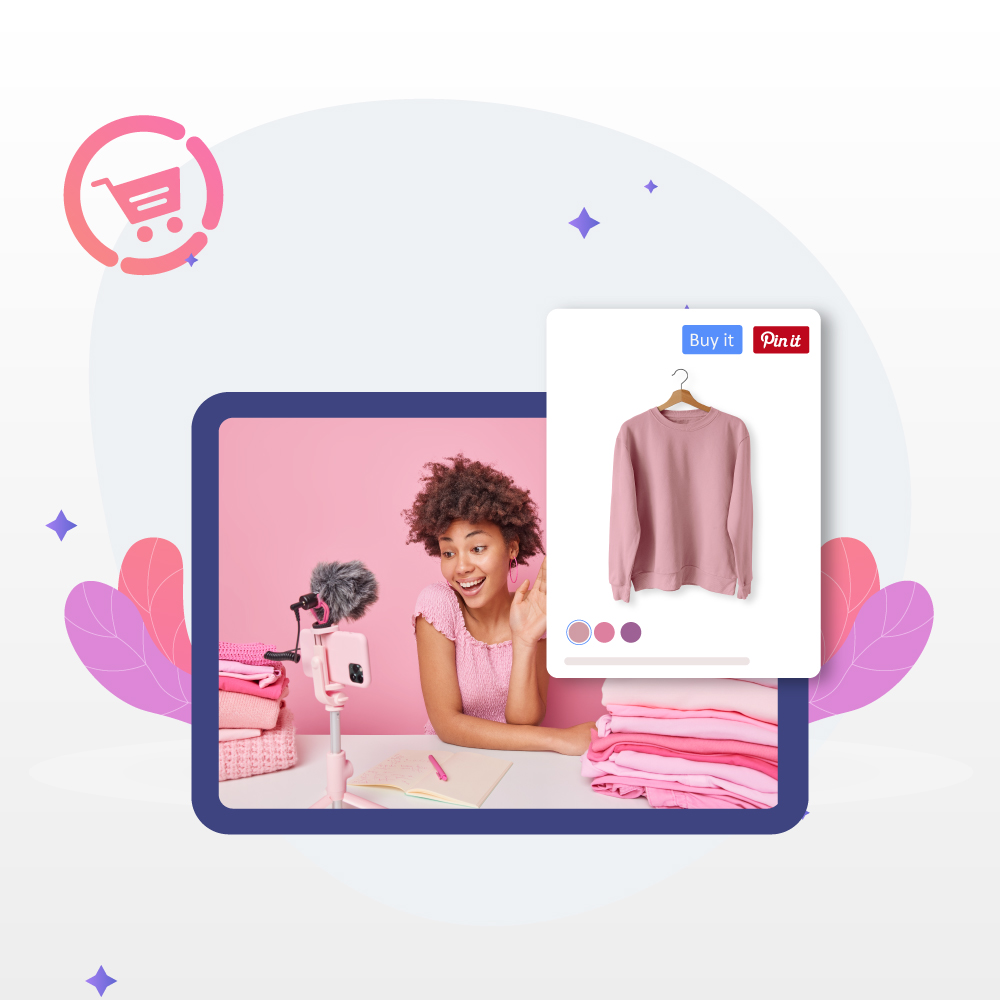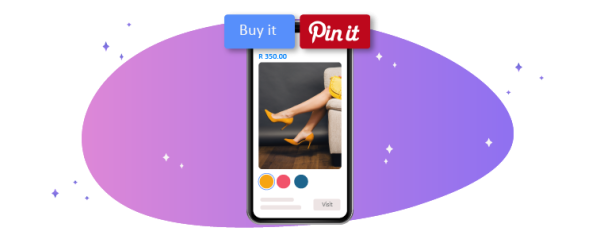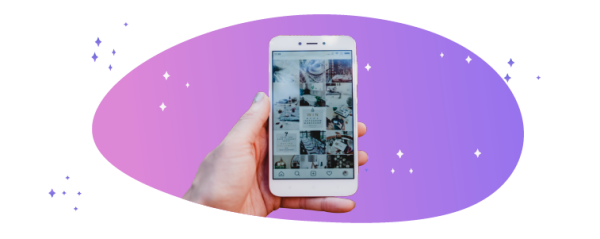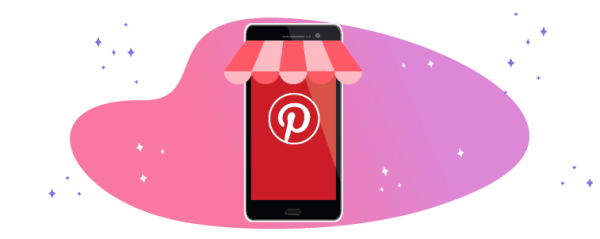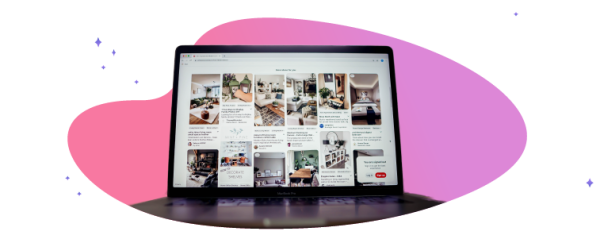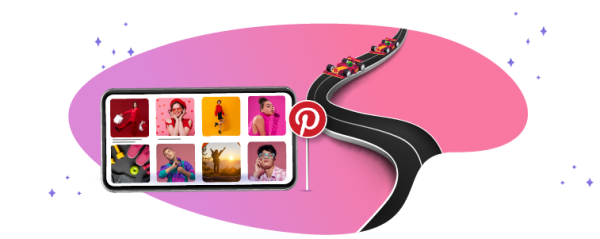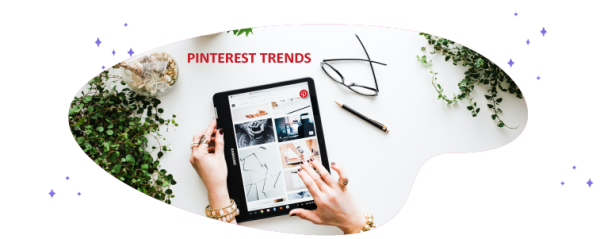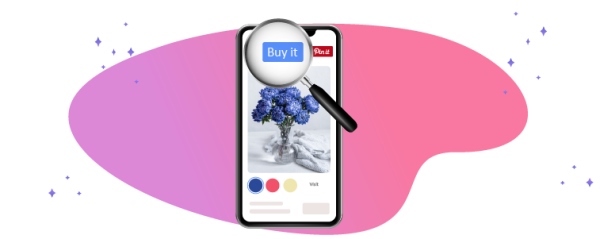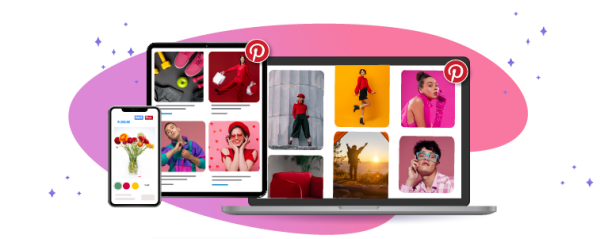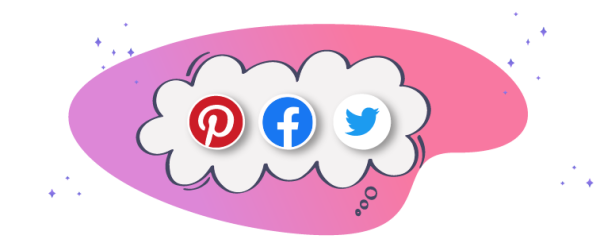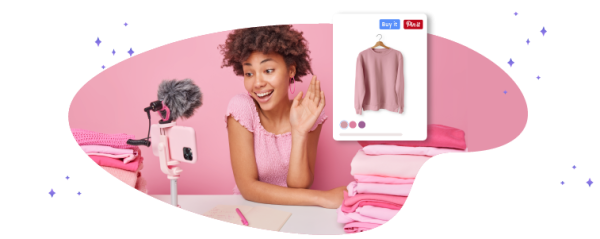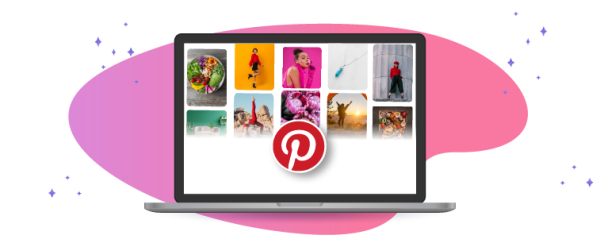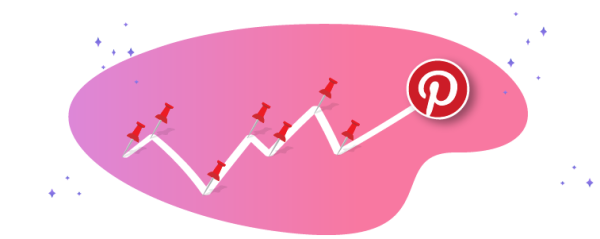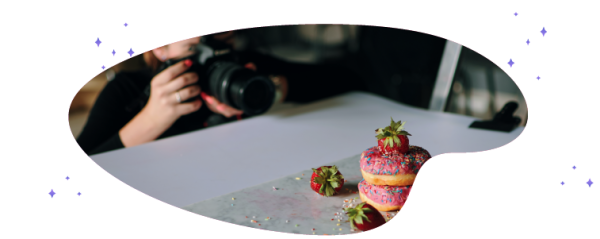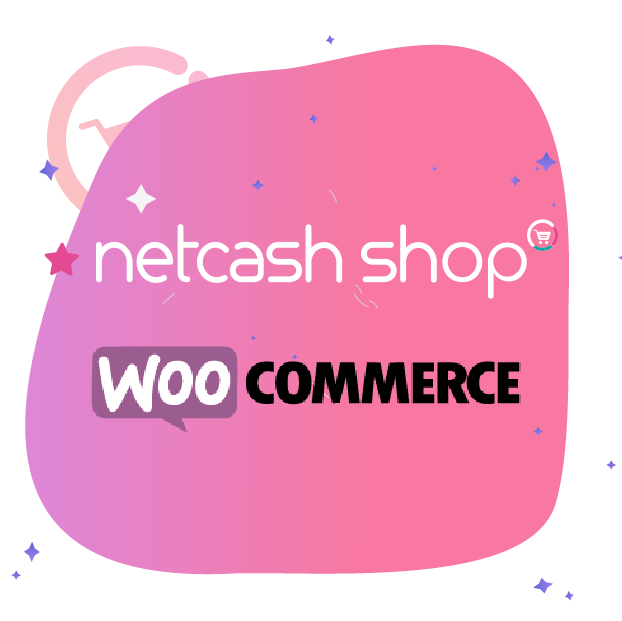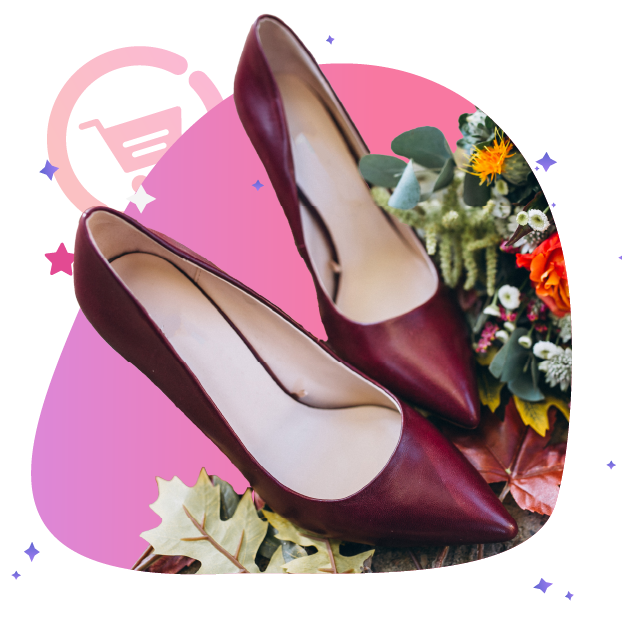
Facebook Advertising Policies 2023 + Other Social Media Advertising Rules
July 26, 2023
eCommerce for services | Sell your services online and increase revenue
September 6, 2023If you’re thinking about selling on Pinterest, you’re probably wondering “where to begin?”. Most people know about the Facebook marketplace or Instagram shopping — although these seemed to be the kingpins, recently Meta made some crucial updates.
Checking out with Facebook and Instagram is not what it used to be — all things considered they both still have nearly five billion monthly users combined.
So it’s no secret that making money on social media sites can be a lucrative way to generate income. However, did you know that over half of Pinterest users (463 million each month) buy directly from the platform, while only 12% of five billion buy on Facebook and Instagram?
If you’re in the business of eCommerce, you probably have eureka moments going on in your head right now. Well stick around, as this post covers everything you need to know, from how to sell on Pinterest, requirements and some bonus handy tips.
Without further adieu, here’s how to sell stuff on Pinterest.
Index
- What is Pinterest, and how does it work?
- Why selling on Pinterest is a good option
- How to sell on Pinterest | Getting started
- How to promote products on Pinterest
- Making money with Pinterest sales
- Requirements to sell on Pinterest
- How to sell on Pinterest without a website
- Which small businesses are most suited to sell on Pinterest?
- What can you sell on Pinterest?
- Tips and tricks for Pinterest selling | Make it work for your small business
- How to sell products on Pinterest | Final word
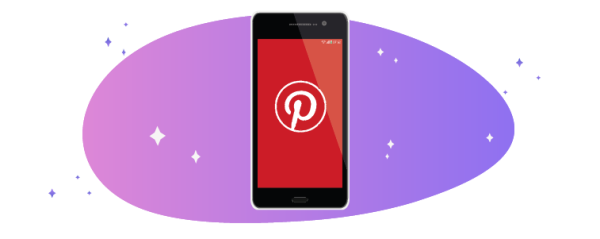
What is Pinterest, and how does it work?
In a nutshell, Pinterest is an image-sharing and social media service. It’s where you can find recipes, fashion inspiration, home decor ideas and other visual aesthetics. It’s seen as a digital message board where millions of users can share ideas, inspirational pins, products and potential buys.
You can browse endless images and videos and search for new products. Pinterest allows you to “pin” any photo or video and save it to your customised pin boards. These boards can fall into many various categories like “winter fashion”, “wedding dress ideas”, or “my dream home”.
Pinning images or videos of product links directly to the seller’s website is how many online retailers, yours included, can sell and make a profit.
Why selling on Pinterest is a good option
Before we get into the nitty-gritty, have a look at why selling on Pinterest is a good option:
- Pinterest can expose your small business to thousands or even millions of users. Pinterest is currently the ninth most used social media platform in South Africa, with 44% of the population using the app. This allows your products to reach audiences and areas of the country that were not previously possible.
- You’ll have an audience who is eager to buy. As of January 2023, 42.5% of South Africans using social media want to find inspiration for things to do and buy. Pinterest allows users to discover new brands and products, with many eager buyers being far more willing to buy than those on Facebook or TikTok.
- You can learn about your audience. Selling through Pinterest can provide valuable insight into your audience. Knowing your audience is one of the significant components of a successful online business. You can find out who’s interested in your product, which performs well, what’s grabbing their attention, and so on.
- You’ll know your target audience. Pinterest allows you to narrow down who you’re selling to. The majority, about 70%, of this platform’s users are women, and 38% of them are between 50 and 65 years old.
- You can link your eCommerce shop and Pinterest accounts. Already have or thinking of creating an eCommerce store? Expose your products to Pinterest’s millions of users and sell them seamlessly from your online shop.
- Pins have a longer lifespan than tweets or Instagram posts. You can use this longevity to your advantage. Since pins can remain in someone’s feed months after it was originally posted, this will help with continued visibility and awareness, leading to more possible purchases.
How to sell on Pinterest | Getting started
Now that you’re convinced of the marketing powers of Pinterest, you’re likely thinking you don’t have enough followers to sell your products. The reality is that you don’t need tons of followers to make money on the platform to begin with.
Your main focus should be having a website rather than gaining many followers. If you use Pinterest and all its handy tools and features effectively, you can drive users back to your website and make sales.
Time to get into a step-by-step guide on how to sell things on Pinterest.
Step 1: Know your audience
Before setting up your shop, you must know who you’re selling to. What are people interested in? Are they young or old? Male or female? Do they make enough money to afford your products?
Without a target audience, you may waste time setting up a Pinterest account if the right people aren’t exposed to it. One of the best ways to determine your target audience is by looking at who already buys your products and who would likely purchase them.
You can create a customer persona on Pinterest’s Buyer Persona Template which includes your target audience’s income, lifestyle, occupation, age, etc. Lastly, look at what’s trending on social media platforms and see if your audience is drawn to specific styles, fashion, themes, etc.
Step 2: Set up your Pinterest business account
If you’re new to Pinterest, you can set up a business account or easily convert your current personal account to a business one. The latter allows you to keep all your posts and followers which will naturally be beneficial to selling on Pinterest.
Whatever the case, ensure you are using a business account when selling products, just like you would with any other social media account. This type of account grants access to tools and features such as analytics and The Rich Pin, which are essential for your success on Pinterest.
To convert your account, go to the “Account management” option on your settings and click on “Account changes” then “Convert to a business account”. Alternatively, you can easily set up a new business account on Pinterest.
Step 3: Brand your Pinterest profile
Branding your small business’s Pinterest profile makes it more identifiable to your followers and customers. For example, a logo makes any brand unique and stands out from regular profiles, such as Sephora, ZARA and Starbucks. Or, if you are the face of your business, a high-resolution headshot will make it easy for your followers and audience to identify your brand.
Other factors like an optimised bio, which is adding strong keywords in your name or description such as “The Gardening Guru”, aesthetic cover boards that match your content or current information can also help build your brand. Join the Verified Merchant Program to verify your brand, adding that legitimacy to create trust and enhance distribution. After all, people love shopping from a brand they can trust.
Make sure your vision and voice is clear. For example, if your small business sells uniquely scented candles or personalised door mats, make sure that your account reflects on just that. Selling candles but engaging or promoting pet accessories won’t exactly help you find your potential buyers.
Step 4: Link to your website or eCommerce store
Now that your account is set up and your brand established, it’s time to link it to your website or eCommerce platform. Whether you’ve built a website for your business using Shopify or WooCommerce, integrating your online shop with Pinterest shouldn’t be an issue.
Linking your website through the profile setting is pretty straightforward. However, you need to claim and verify your website by adding a meta tag or uploading an HTML file. You can get more insight on achieving this via Pinterest’s official business site.
Note: Only one verified or claimed website per business account is allowed.
How to promote products on Pinterest
After setting up your account and linking your website, you can start promoting your products on Pinterest and reach more online customers.
Advertising on Pinterest is a powerful tool that allows you to create campaigns, reach a bigger demographic and choose between the most suitable promotion formats. These include video pins, idea pins, promoted pins, try-on product pins and carousels.
Unfortunately, Pinterest advertising is not an option for South Africans right now as there is no available market for ads in the country. However, keep a close eye on the Pinterest newsroom for any updates regarding which countries have access to Ads.
Making money with Pinterest sales
Now that you know how to start selling on Pinterest, how does one make money on the platform? Apart from linking your eCommerce business to Pinterest, you can also get paid to create on it by monetising through affiliate marketing or brand partnership.
Let’s have a closer look at how you can make money on Pinterest:
Create traffic to your eCommerce products
After linking your eCommerce website to your Pinterest business account — the first thing you want to do is generate traffic. The more traffic flows to your products, the more sales you can make. This is easy to grasp, but drawing users and getting them to purchase takes effort.
You can start by pinning your product pages directly to Pinterest in order to drive more sales. Knowing the keywords your targeted customers are searching for, such as “Home Decor or “DIY and Crafts”, then linking pins directly to your online store will work in your favour.
Growing your following on Pinterest is surprisingly not as important as creating relevant pins. You can reach followers/potential customers by posting relevant pins.
Relevant pins not only attract your core audience, but Pinterest will start showing your pins in “Picked for You” on a user’s home feed — generating even more potential traffic to non-followers.
Generate pins for affiliate partnerships
Affiliate marketing is an excellent way for entrepreneurs to build a passive income. Affiliate marketing is when an online retailer pays a commission to an external website for traffic or sales. You can add external affiliate links to relevant pins that redirect audiences to your eCommerce shop.
Another option for small businesses is to use content creators or influences to promote their affiliate products to reach more customers. Create pins that link directly to your affiliate links, blogs, vlogs, etc., to increase your earning potential and improve your revenue.
Remember to clearly state when you’re using affiliate links on your products, per FTC guidelines. Only share direct links and optimise your pins with keywords related to your affiliate products.
Monetise your Pinterest account with the creator fund
The Pinterest Creator Fund program takes place quarterly with the aim of helping creators grow and monetise their content. Joining this program can help your small business gain access to one-of-a-kind brand partnerships, resources and tools such as audience insight and Pinterest trends to help you expand your reach.
Have someone manage your Pinterest account
Some people, such as virtual assistants, admin professionals or social media managers, can help you grow your Pinterest account. These individuals should have the skills to organise, develop strategies, research keywords, etc. This will boost your reach and, if done correctly, convert browsers to buyers.
While you’ll need to pay someone, this might be your best option if you’re not internet savvy. Many small business owners may also be too busy to consistently post, edit images, find keywords, reply to comments, etc. Having a skilled person manage your account can ultimately increase your profit margin.
Increase sales by sharing shoppable pins
Another way to monetise your business’ Pinterest account is to share shoppable pins for your inventory. This is an effective way to increase sales if you sell products online.
Enabling shoppable pins or Product Pins allows you to list all your products on Pinterest so that customers wouldn’t have to leave the platform to make a purchase. This allows quick access to your products, ensuring a seamless and positive online experience.
Requirements to sell on Pinterest
Before you start selling on Pinterest, make sure you meet these requirements:
You must have a domain name
You must own your website’s domain name to claim it on Pinterest. You can claim more than one website per Pinterest account. To claim your website, first verify if your business owns a second-level domain, a subdomain or a subpath domain.
In order for you to claim your Instant Site you will need to use a custom domain name. Your eCommerce website must have a domain age of less than nine months.
Tip: Have a look at our eCommerce website hosting solutions to help create your domain if you don’t have one yet. We offer 10% off for Netcash account customers on various hosting and registration packages with Domains.co.za (Ts & Cs apply).
Consider the Pinterest catalogs requirements
Uploading your online catalog to Pinterest makes it easier for customers to buy on the platform. Unfortunately, Pinterest Catalogs are not available to business accounts in South Africa, as seen here. However, it’s still possible to connect your online store by claiming your website via HTML tags which allows users to access your products on the platform.
How to sell on Pinterest without a website
How do you sell on Pinterest without a website? This is possible through affiliate marketing.
Owning an eCommerce website can be pricey. So if you can’t afford a website just yet, you can start selling on Pinterest without one.
You’ll add affiliate links to the URL box in each pin. When someone purchases through one of your affiliated pins, you’ll make a commission on the sale.
Follow these steps to sell on Pinterest without a website:
1. Organise your products into boards
A Pinterest board is a collection of pins, and you can utilise these to categorise and organise your products. This is essential as boards make it easy for shoppers to find your products. For example, if you sell beauty products, you can create a “no makeup makeup look” board, and since it’s very on trend right now, you can reach a lot more people.
2. Display your products as pins
Aesthetically pleasing pins are the best way to draw attention on Pinterest, and the best part is you can use them to display products. What’s more, Pinterest allows you to create unlimited pins for the same product but using different visuals, for example, styling one clothing item in various ways. Creating multiple pins in various creative displays increases your visibility.
3. Use other social media platforms to promote your pins
One of the best ways to sell on Pinterest without a website is by connecting multiple social media platforms to reach even bigger audiences. Pinterest allows you to share your pins or boards on Instagram and Twitter and you can promote them organically by using trending or relevant hashtags when posting. Alternatively, you can post your pins’ links on your Facebook page.
Which small businesses are most suited to sell on Pinterest?
Pinterest is an excellent choice for small businesses. It offers excellent user engagement, lots of traffic and converts more browsers into buyers than any other social media platform.
The fact that it can integrate with eCommerce websites and other social media accounts makes it much easier for online retailers to sell online.
Your small business might be perfect for Pinterest if:
- You’re interested in growing an online audience.
- You enjoy being active and posting on social media.
- You, or someone on your team, are passionate about photography and editing.
- You already have an eCommerce website but need more exposure.
Here are some examples of South African businesses using Pinterest:
What can you sell on Pinterest?
Not sure what to sell on Pinterest? Here are some of the best-selling products in 2023 to inspire you or even help your small business flourish. These types of items can have a successful selling rate regardless of your country.
- Beauty products
- High-end fashion
- Skin care products
- Home decor, including bedroom and bathroom decor
- Jewellery
- DIY and craft products
- Clothing
- Shoes
- Bags
- Paintings
- Nail art
- Perfumes
- Outdoor furniture
- Sports equipment
- Towels
Tips and tricks for Pinterest selling | Make it work for your small business
Why end with an instruction manual when you can apply these nifty tips and tricks to make selling on Pinterest worthwhile? Use the following information to make Pinterest work for your small business.
Use keywords
Pinterest operates just like any other search engine, and this is why search engine optimisation (SEO) can significantly impact your business’s growth on the platform. Optimising your pins and profile will boost your visibility in search results, granted you’re using relevant keywords.
You can include top keywords in your profile bio and image’s filename when uploading images. Create boards with the top keywords you’re targeting in mind. Lastly, optimise your pins by including target keywords in their descriptions, title, image filename and website address.
Track and analyse your pins
Pinterest has in-built analytics that allows you to track trends and other metrics to help you sell on the platform. These metrics include saves, pin click rates, impressions, engaged audience, monthly total audience, top pins and boards, audience insight and total audience.
You can also set up a Pinterest Tag for your online store, which allows you to track user behaviour after viewing your promoted pins.
Engage with your audience
One of the most essential ways to make Pinterest work for your online store is by being responsive and supportive. Don’t forget that Pinterest is also a social networking platform, meaning you’ll have to be social to grow your audience.
You can build an online community (and eventually loyal customers) if you’re always present. Answer questions by followers, react, and engage with their pins or boards. Finally, follow Pinterest accounts in your niche. Engagements help with getting to know your audience and following the right people shows you what they’re interested in,what inspired them, etc.
Utilise the rich pin feature
Enable the Rich Pin feature before sharing your products on Pinterest. Doing so ensures that all pins created from your site are up-to-date and in sync with current information on your website.
It works by pulling through the most recent details, such as price or description, from your website. Otherwise, you’d have to update existing pins manually which can take up much of your time. Having everything up-to-date will also ensure a smooth user experience and prevent any mishaps that may make you appear negligent.
Focus on high-quality visuals
Pinterest is all about visuals and aesthetics. Otherwise, it wouldn’t be the Pinterest we all know and love. That said, you must ensure that the images or video you create your pins and boards with are high quality.
Better visuals are pinned more. And by now, you know that more pinning equals more winning for your online store. Show users the quality of your products, inspire them, move them with your content, and you might just have a new customer.
How to sell products on Pinterest | Final word
Selling on Pinterest can be straightforward and seamless if you follow the above steps. This post covers all the fundamental insights to get you started, but you’ll find even more information on the Pinterest site.
Pinterest is not intimidating at all, making navigating through its wonderful features and tools a breeze. As a small business owner, it only makes sense to hop on board with Pinterest (pun intended). It can integrate with eCommerce websites or link with online stores, offers analytics, and innovative ways to reach bigger audiences — what more could you need?
So if you’re thinking about branching out your online store to social media platforms, you can’t go wrong with Pinterest.
Next Read: Creating a social media strategy for small businesses
Candice Sergeant is an experienced eCommerce Product Owner at Netcash, driving the growth strategy for SaaS e-commerce solutions in South Africa with global partner Ecwid by Lightspeed. Candice is skilled at uncovering opportunities to optimize the online presence and operations of startups and medium businesses across a range of industries.

Subscribe to our mailing list to learn about our new features and marketing tips & tricks.
